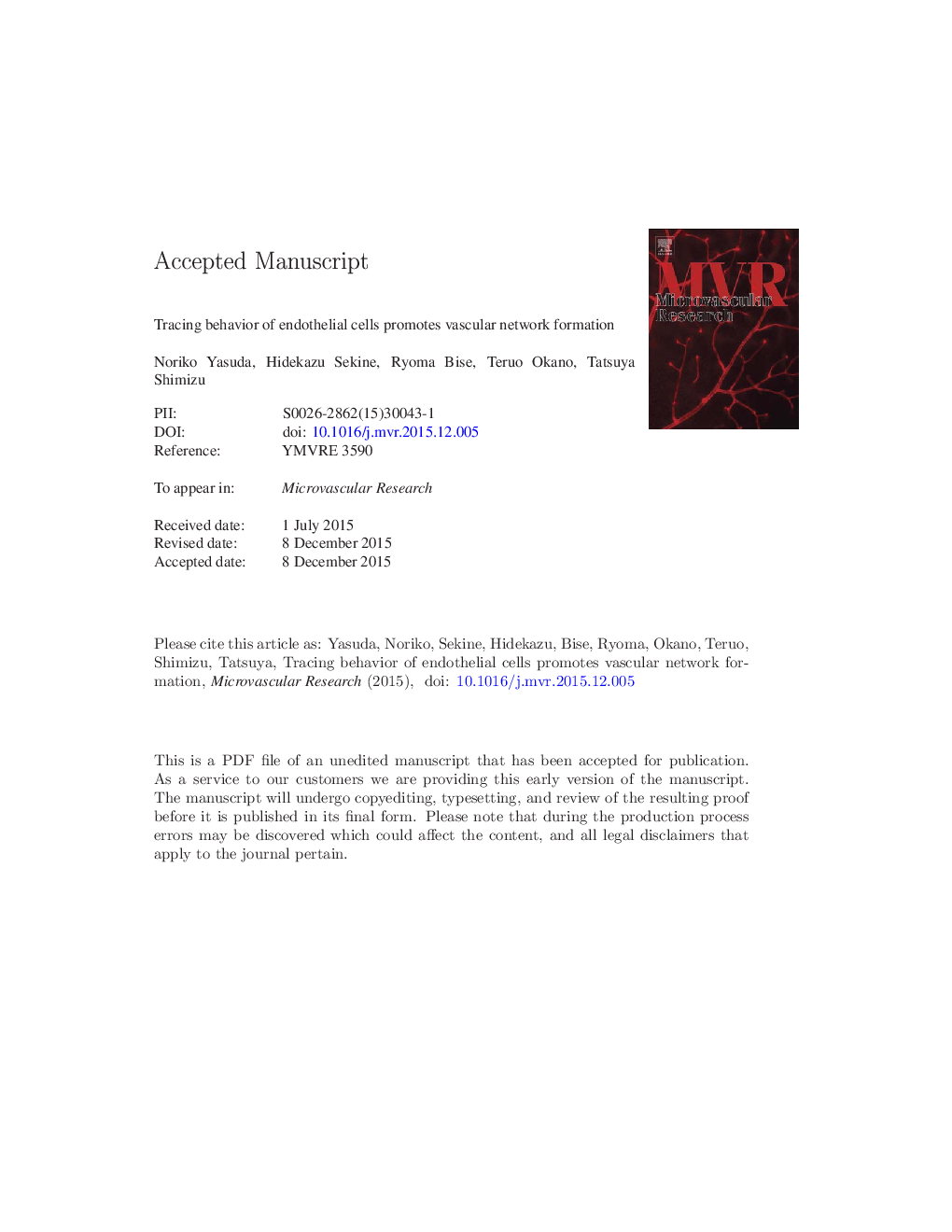| کد مقاله | کد نشریه | سال انتشار | مقاله انگلیسی | نسخه تمام متن |
|---|---|---|---|---|
| 8341100 | 1541279 | 2016 | 33 صفحه PDF | دانلود رایگان |
عنوان انگلیسی مقاله ISI
Tracing behavior of endothelial cells promotes vascular network formation
ترجمه فارسی عنوان
ردیابی رفتار سلولهای اندوتلیال باعث ایجاد شبکه عروقی می شود
دانلود مقاله + سفارش ترجمه
دانلود مقاله ISI انگلیسی
رایگان برای ایرانیان
کلمات کلیدی
سلول های اندوتلیال، شبکه عروقی، چرخه سلولی، مهاجرت،
موضوعات مرتبط
علوم زیستی و بیوفناوری
بیوشیمی، ژنتیک و زیست شناسی مولکولی
زیست شیمی
چکیده انگلیسی
The in vitro formation of network structures derived from endothelial cells in grafts before transplantation contributes to earlier engraftment. In a previous study, endothelial cells migrated to form a net-shaped structure in co-culture. However, the specific network formation behavior of endothelial cells during migration remains unclear. In this study, we demonstrated the tracing behavior and cell cycle of endothelial cells using Fucci-labeled (Fluorescent Ubiquitination-based Cell Cycle Indicator) endothelial cells. Here, we observed the co-culture of Fucci-labeled human umbilical vein endothelial cells (HUVECs) together with normal human dermal fibroblasts (NHDFs) using time-lapse imaging and analyzed by multicellular concurrent tracking. In the G0/G1 period, HUVECs migrate faster than in the S/G2/M period, because G0/G1 is the mobile phase and S/G2/M is the proliferation phase in the cell cycle. When HUVECs are co-cultured, they tend to move randomly until they find existing tracks that they then follow to form clusters. Extracellular matrix (ECM) staining showed that collagen IV, laminin and thrombospondin deposited in accordance with endothelial cell networks. Therefore the HUVECs may migrate on the secreted ECM and exhibit tracing behavior, where the HUVECs migrate toward each other. These results suggested that ECM and a cell phase contributed to form a network by accelerating cell migration.
ناشر
Database: Elsevier - ScienceDirect (ساینس دایرکت)
Journal: Microvascular Research - Volume 105, May 2016, Pages 125-131
Journal: Microvascular Research - Volume 105, May 2016, Pages 125-131
نویسندگان
Noriko Yasuda, Hidekazu Sekine, Ryoma Bise, Teruo Okano, Tatsuya Shimizu,
